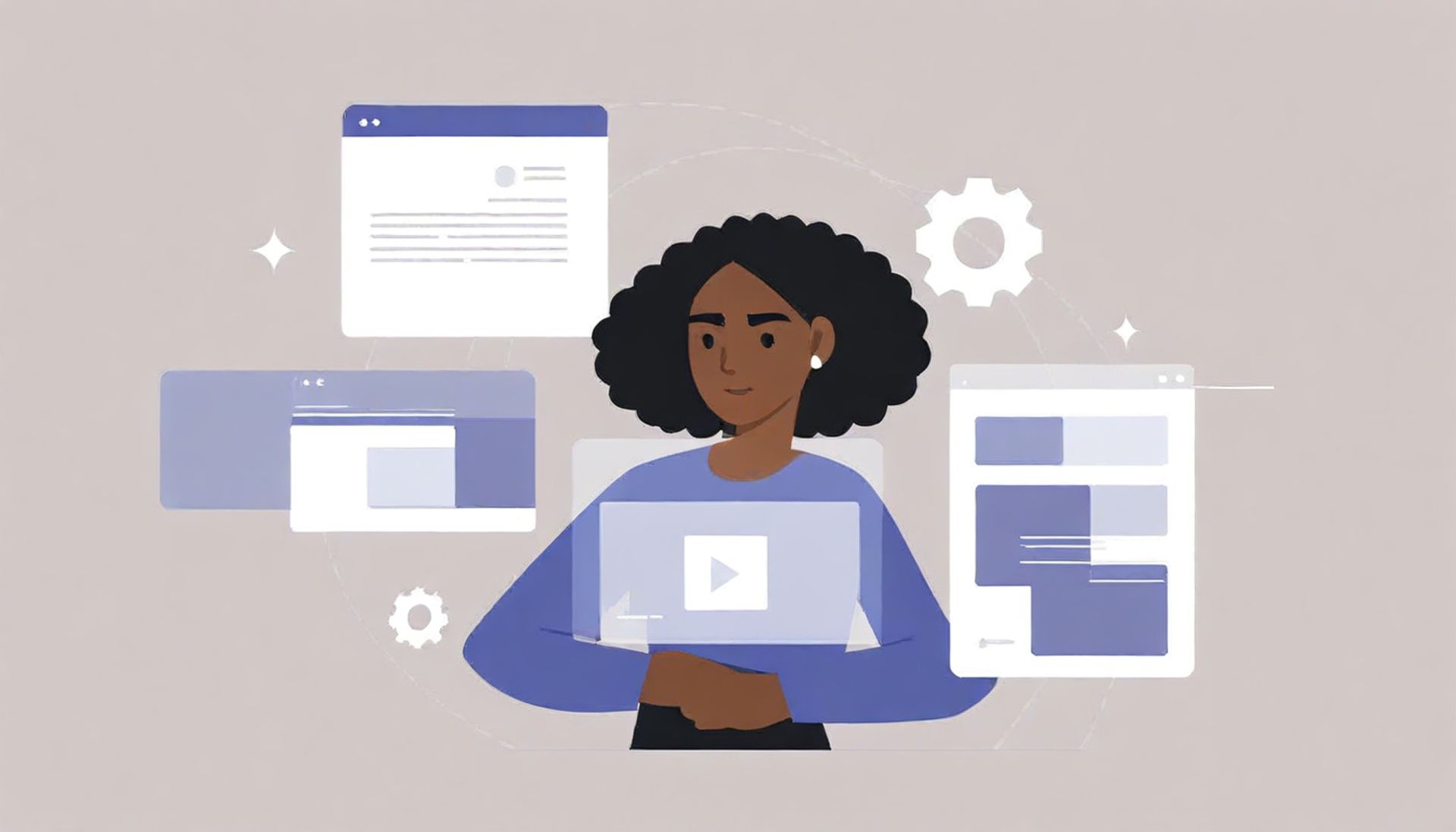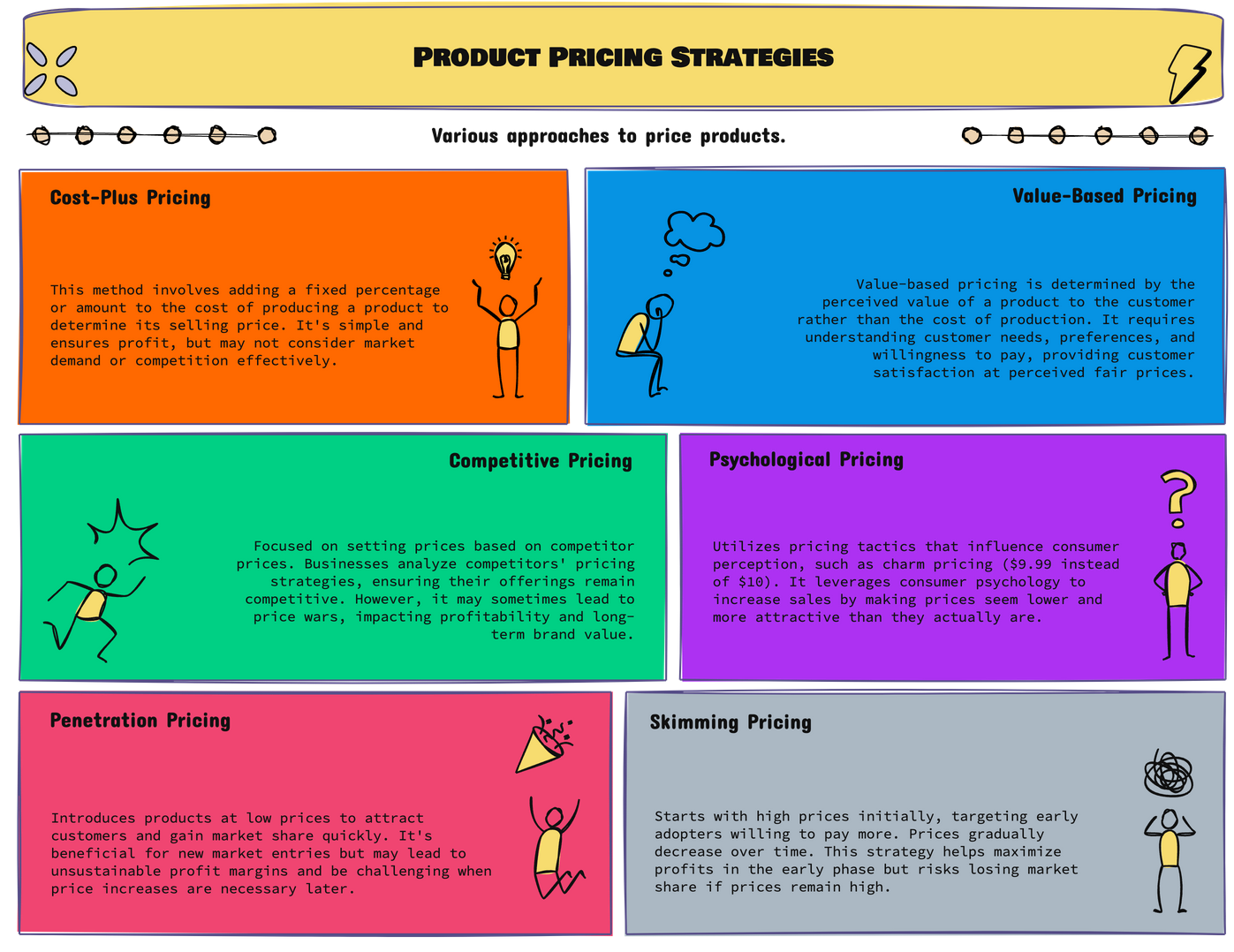
Write your awesome label here.
5 Quick Video Editing Tools for Social Media Marketers
Mar 12

Mar 12
5 Quick Video Editing Tools for Social Media Marketers

Indeed, AI-powered communication has come a long way, evolving from basic chatbots to sophisticated conversational interfaces. According to a study by Gartner, by 2022, 25% of customer service operations will use virtual customer assistants, further solidifying AI's role in shaping the future of communication.
This shift towards AI-driven communication has numerous benefits, including increased efficiency, reduced response times, and enhanced personalization. By leveraging machine learning algorithms and natural language processing, AI systems can analyze vast amounts of data to provide tailored responses, ultimately leading to more effective and engaging interactions.
The implications of AI-powered communication extend beyond customer service, as it also opens up new avenues for businesses to connect with their audience, build brand awareness, and drive revenue growth. Moreover, individuals can leverage AI-driven communication tools to streamline their workflows, freeing up time for more strategic and creative pursuits.
The Early Days: FAQs and Chatbots
The concept of automated support has been around for decades, with FAQs being one of the earliest forms of AI-powered communication. These static lists of questions and answers provided a basic level of self-service support, allowing customers to find quick answers to common queries. According to Gartner, FAQs were initially used in the 1990s as a way to reduce the volume of repetitive inquiries to customer support teams.
As technology advanced, chatbots emerged as a more interactive way to provide automated support. These early chatbots used simple decision trees and rule-based systems to engage with customers and provide basic support. While limited in their capabilities, they marked an important step towards more advanced conversational systems. In fact, a study by IBM found that chatbots were able to handle up to 80% of routine customer inquiries, freeing up human support agents to focus on more complex issues.
Despite their limitations, these early AI-powered tools laid the groundwork for more sophisticated conversational systems. They demonstrated the potential of automation to improve customer experience and reduce support costs. As AI technology continues to evolve, we're seeing the development of more advanced conversational systems that can understand natural language, empathize with customers, and provide personalized support.
Write your awesome label here.
The Rise of Virtual Assistants
Virtual assistants like Siri, Alexa, and Google Assistant marked a significant leap forward in AI-driven communication. These voice-activated helpers can perform tasks, answer questions, and even engage in basic conversations, making them an integral part of our daily lives.
According to a report by Statista, the number of virtual assistant users worldwide has been steadily increasing, with an estimated 4.2 billion users in 2021. This widespread adoption is a testament to the convenience and functionality that these AI-powered tools bring to our daily routines.
One of the key benefits of virtual assistants is their ability to multitask, allowing users to perform multiple actions simultaneously. For instance, users can ask Alexa to play music while setting a timer, or request Google Assistant to provide directions while sending a text message. This level of convenience has revolutionized the way we interact with technology, making it more seamless and efficient.
As AI technology continues to evolve, we can expect virtual assistants to become even more sophisticated, enabling them to understand complex requests and respond with greater accuracy. This could lead to even more innovative applications, such as virtual assistants that can anticipate our needs and proactively offer solutions, further blurring the lines between humans and machines.
Conversational AI: The Next Generation
Write your awesome label here.
The rapid progress of conversational AI has led to a significant shift in the way humans interact with machines. With the ability to comprehend nuances of language, context, and emotions, AI-powered systems can now engage in more natural and human-like conversations. This breakthrough has far-reaching implications, particularly in the realm of customer service, where personalized interactions can greatly enhance the overall experience.
According to a study by Gartner, by 2025, 25% of customer service operations will use virtual customer assistants, leading to increased efficiency and reduced costs. As conversational AI continues to advance, we can expect to see even more innovative applications across various industries.
The ability of machines to understand emotions, in particular, has opened up new avenues for empathetic and supportive interactions. This can be especially beneficial in situations where humans may struggle to provide emotional support, such as in mental health chatbots or virtual therapy sessions. As the technology continues to evolve, we can expect to see more sophisticated and empathetic AI-powered systems that can provide comfort and solace to those in need.
The Future of Communication: Opportunities and Challenges
The integration of AI in communication has undoubtedly revolutionized the way we interact with each other, making it faster, more efficient, and personalized. However, as we continue to rely on AI-powered systems, it's crucial to acknowledge the potential risks associated with data privacy. According to a report by the Pew Research Center, a significant majority of Americans believe that their personal data is less secure now than it was five years ago. This concern is particularly relevant in the context of AI-driven communication, where vast amounts of user data are being collected and analyzed.
Bias is another critical issue that needs to be addressed in AI-enhanced communication. AI systems are only as good as the data they're trained on, and if that data is biased, the outcomes will be too. This can lead to discriminatory behavior, perpetuating existing social inequalities. For instance, a study by the National Academy of Sciences found that facial recognition algorithms are more likely to misidentify people of color, highlighting the need for more diverse and representative training data.
The potential impact of AI on human relationships is also a topic of concern. While AI can facilitate communication, it can also lead to a sense of isolation and disconnection. A study by the American Psychological Association found that excessive social media use can lead to increased feelings of loneliness and depression. As AI becomes more pervasive in our communication, it's essential to strike a balance between technology and human interaction.
Ultimately, it's crucial to acknowledge these concerns and work towards developing AI-enhanced communication systems that prioritize transparency, accountability, and human well-being. By doing so, we can ensure that the benefits of AI are shared equitably, and that we're creating a more inclusive and compassionate digital landscape for everyone involved.
Embracing the Future of Communication
Write your awesome label here.
The rapid advancement of Artificial Intelligence (AI) in communication has revolutionized the way we interact with each other and with machines. From simple FAQ systems to sophisticated conversational interfaces, AI has come a long way in enabling more efficient and personalized communication. According to a report by Gartner, by 2022, 70% of white-collar workers will interact with chatbots daily, demonstrating the growing reliance on AI-powered communication.
The future of AI in communication holds immense promise, with potential applications in various industries, including customer service, healthcare, and education. As AI continues to advance, we can expect more nuanced and human-like interactions, enabling deeper connections and understanding between humans and machines. By embracing this evolution, we can unlock new possibilities for collaboration, innovation, and social progress.
Moreover, AI-powered communication can also facilitate greater accessibility and inclusivity, enabling people with disabilities or language barriers to interact more easily. For instance, AI-driven language translation tools can break down language barriers, fostering global understanding and collaboration. As we move forward, it's essential to prioritize the responsible development and deployment of AI in communication, ensuring that its benefits are equitably distributed and its risks are mitigated.
Dynamic Pricing Tactics
Write your awesome label here.
Dynamic pricing lets you change prices based on market conditions. This flexible approach can boost profits and sales. It uses different methods to set the right price at the right time.
Introducing Psychological Pricing
- Psychological pricing uses prices that appeal to emotions. The most common tactic is charm pricing. This means setting prices just below a round number, like $9.99 instead of $10.
- People tend to focus on the first digit. They see $9.99 as much cheaper than $10, even though it's only a penny less. This can lead to more sales.
- Another tactic is prestige pricing. You set prices high to make products seem luxurious. A $1,000 watch might sell better than a $999 one. Some customers link high prices with high quality.
Advantages of Penetration Pricing
- Penetration pricing means setting low prices when you enter a market. This helps you gain market share quickly. It works well for new products or services.
- Low prices attract many customers fast. This can create buzz and word-of-mouth marketing. It also makes it hard for competitors to keep up.
- As you gain more customers, you can slowly raise prices. But be careful not to raise them too fast. Customers might leave if prices jump too much.
- This method works best when you can handle high sales volumes. You need to make up for low prices with more sales.
Benefits of Premium Pricing Models
- Premium pricing sets prices higher than average. It works well for unique or high-quality products. This model can increase profits and brand value.
- Higher prices can make products seem more valuable. Some customers will pay more for products they see as better. This can lead to loyal customers who buy again and again.
- Premium pricing also lets you offer discounts without hurting profits. You can have sales or give coupons while still making money. This flexibility helps during slow periods.
- To use this model, make sure your product quality matches the price. Customers expect more when they pay more. Deliver on that promise to keep them happy.


The rise of AI-driven content creation has been nothing short of phenomenal, with more and more businesses leveraging its capabilities to streamline their content production processes. According to a report by MarketsandMarkets, the global AI-powered content creation market is expected to grow from USD 1.6 billion in 2020 to USD 15.6 billion by 2026, at a Compound Annual Growth Rate (CAGR) of 40.3% during the forecast period.
This exponential growth can be attributed to the numerous benefits that AI-driven content creation offers, including increased efficiency, reduced costs, and enhanced personalization. By automating routine tasks such as content generation, optimization, and distribution, businesses can free up valuable resources and focus on high-level creative strategy. Moreover, AI-driven content creation enables businesses to produce high-quality, engaging content at scale, which is critical in today's digital landscape where consumers are bombarded with information from all directions.
Furthermore, AI-driven content creation has the potential to unlock new revenue streams for businesses. For instance, AI-generated content can be used to create targeted advertising campaigns, sponsored content, and even entire product lines. According to a study by McKinsey, personalization can increase sales by up to 10% and improve customer satisfaction by up to 20%. By leveraging AI-driven content creation, businesses can tap into these opportunities and drive growth.
As the technology continues to evolve, we can expect to see even more innovative applications of AI-driven content creation. From generating immersive experiences to creating interactive content, the possibilities are endless. As businesses look to stay ahead of the curve, it's essential to understand the transformative power of AI-driven content creation and how it can be harnessed to drive growth and success.
The Rise of AI-Driven Content
One of the most significant advantages of AI-driven content creation is its ability to process and analyze vast amounts of data quickly and accurately. This enables businesses to gain valuable insights into their target audience's preferences, behaviors, and pain points, which can be used to craft content that resonates with them on a deeper level. According to a study by MarketingProfs, 61% of marketers believe that AI has improved their ability to personalize content.
AI-driven content creation also offers unparalleled scalability and speed. Machine learning algorithms can generate high-quality content at a fraction of the time and cost of traditional content creation methods. This makes it an attractive solution for businesses that need to produce large volumes of content quickly, such as e-commerce companies or news organizations. In fact, according to a report by Gartner, by 2024, 30% of all B2B companies will use AI to generate content.
Furthermore, AI-driven content creation can help businesses overcome the challenges of content fatigue. By analyzing user behavior and preferences, AI algorithms can identify patterns and trends that can be used to create fresh and engaging content that resonates with the target audience. This can help businesses break through the noise and establish a strong brand voice in a crowded market.
Write your awesome label here.
Personalisation and Contextual Relevance
Personalization is a crucial aspect of modern marketing, and AI-driven content creation excels in this area. According to a study by MarketingProfs, 71% of consumers prefer personalized ads, and 76% of marketers believe that personalization has a strong impact on their overall marketing efforts. By leveraging AI algorithms, businesses can create content that speaks directly to their target audience, increasing the likelihood of conversion and brand loyalty.
The ability to analyze vast amounts of user data enables AI-driven content creation to tailor messages that resonate with individual users. This could include product recommendations based on browsing history, tailored promotions, or even customized content that addresses specific pain points. As a result, users feel seen and understood, leading to increased engagement and a stronger connection with the brand.
In addition, AI-driven content creation can help businesses overcome the challenge of scaling personalization efforts. Traditional methods of personalization often rely on manual analysis and content creation, which can be time-consuming and resource-intensive. AI algorithms, on the other hand, can process vast amounts of data in real-time, generating personalized content at scale and speed.
Scalability and Efficiency
Write your awesome label here.
By leveraging AI-driven content creation, businesses can significantly reduce the time and resources required for content production, allowing them to focus on high-level strategy and creativity. This is particularly important in today's fast-paced digital landscape, where the demand for high-quality content is higher than ever. According to a report by MarketingProfs, 60% of marketers create at least one piece of content per day, highlighting the need for efficient content production methods.
The scalability offered by AI-driven content creation also enables companies to expand their content offerings without sacrificing quality. This can be particularly beneficial for businesses that need to produce large volumes of content, such as e-commerce sites or news organizations. By automating the content generation process, these companies can focus on more strategic initiatives, such as developing their brand voice or creating engaging customer experiences.
Moreover, AI-driven content creation can help businesses to improve the consistency and accuracy of their content. AI algorithms can be trained to adhere to specific brand guidelines and tone, ensuring that all content produced meets the company's standards. This can be particularly important for large enterprises with multiple content creators, where consistency can be a challenge.
Measuring Success and ROI
Measuring the impact of AI-driven content creation is crucial for businesses to understand its effectiveness and make data-driven decisions. By monitoring key performance indicators (KPIs) such as engagement rates, conversion rates, and customer acquisition costs, companies can identify areas of improvement and adjust their content strategy accordingly. According to a study by MarketingProfs, 60% of marketers consider engagement metrics to be the most important for measuring content performance.
Tracking these KPIs also enables businesses to calculate their return on investment (ROI) from AI-driven content creation. By comparing the costs of producing and distributing content with the revenue generated, companies can determine whether their content strategy is yielding a positive ROI. This information can then be used to optimize the content creation process, allocate resources more efficiently, and make informed decisions about future investments.
Furthermore, measuring the impact of AI-driven content creation can help businesses identify opportunities to improve their customer experience. By analyzing metrics such as time spent on site, bounce rate, and pages per session, companies can gain insights into how users are interacting with their content and make adjustments to enhance engagement and conversion rates. This data-driven approach can lead to more effective content marketing strategies and ultimately drive business growth.
Unlocking Business Growth
Write your awesome label here.
The integration of AI-driven content creation into business strategies is no longer a novelty, but a necessity for staying ahead of the competition in today's digital landscape. According to a report by MarketingProfs, 61% of marketers believe that AI is crucial for their company's success. By embracing this technology, companies can unlock new avenues for growth, increase efficiency, and drive revenue.
The benefits of AI-driven content creation are multifaceted. For instance, AI-powered tools can analyze vast amounts of data to generate high-quality, personalized content that resonates with target audiences. This not only enhances customer engagement but also frees up human resources to focus on more creative and strategic tasks. Moreover, AI-driven content creation enables businesses to produce content at scale, thereby increasing their online presence and reach.
As the technology continues to evolve, one thing is certain – AI-driven content creation is here to stay, and its potential to transform businesses is vast. With the ability to process vast amounts of data, identify patterns, and learn from experiences, AI-powered tools are becoming increasingly sophisticated. As a result, businesses that fail to adopt AI-driven content creation risk being left behind in the competitive landscape.
Join our newsletter
Get freebies, discounts and useful information
Thank you!

We are an online educational platform that helps professionals and aspiring individuals to succeed in their goals.
Connect with us
Copyright Mindmekka Learning Solutions (Pty) Ltd © 2025. All Rights Reserved
Designed and built for everyone
Through a decade of experience in educational technology, as well as pedagogical conviction in experiential learning, Mindmekka has reinvented adult education

Write your awesome label here.

